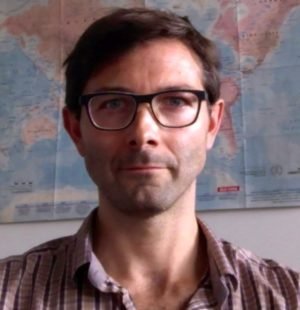
Andrea Cattoni

Chargé de Recherche CNRS
email: andrea.cattoni@c2n.upsaclay.fr
Phone: +33 (0)1 70 27 06 91
I’m a CNRS research scientist at the Center for Nanoscience and Nanotechnology (C2N, CNRS and Paris-Saclay University). My research interests are currently focused on light trapping for ultra-thin and tandem solar cells (III-V, CIGS), III-V Nanowire growth, and low-cost and large surface area nanofabrication technologies.
Together with Stéphane Collin, I created the SUNLIT team in 2014. I’m also associated with the Institut Photovoltaïque d’Ile-de-France (IPVF). In the framework of the IPVF research program on III-V solar cells at IPVF, I’m the principal investigator for the work packages related to III-V integration on Silicon: “multi-functional bonding for III-V on Si” and “III-V Nanowires on Si”. I’m also the C2N scientific officer for NFFA-Europe-Pilot (NEP) (NFFA).
I hold a master degree from the “Politecnico di Milano” in Electronics Engineering and a PhD in Physics from the same institution. During my PhD I worked under the supervision of Riccardo Bertacco on the epitaxial growth of metals and oxides for Spintronics. I fabricated the first magnetic tunnel junction device of the group and I’m glad to say that, after 10 years (and a lot of work I haven’t done), the group is using this technology for different applications in biology, from early stage cancer diagnosis to rapid diagnostic tests for Malaria.
I then moved to LPN-CNRS where I started working on nanofabrication for magnetism with Giancarlo Faini and Anne-Marie Haghiri-Gosnet. During these years, I developed a low-cost fabrication technology for the direct Nanoimprint of polymers and sol-gel derived materials that we now successfully use for light trapping in ultra-thin solar cells. Soon after my arrival at LPN-CNRS, I met Stéphane Collin and moved my interest to Plasmonics and Nanophotonics. Together, we experimentally demonstrated, for the first time, nearly perfect omnidirectional absorption of infrared light in dielectric cavities with λ3/1000 volumes. From there, we moved to the visible spectral range and we applied these concepts to obtain multi-resonant absorption inside ultra-thin Si, CuInxGa(1-x)Se2, and III-V semiconductor absorbers for the fabrication of ultra-thin solar cells and hot carrier solar cells. Check our recent review paper on Nature Energy: “Progress and prospects for ultrathin solar cells“.
My activity on nanowire growth started in 2012 when I was recruited as a CNRS researcher. This activity is carried out in close collaboration with the material department of the C2N, in particular with Fabrice Oehler and Jean-Christophe Harmand.
These research activities have been developed with numerous national and international collaborations. I have participated in several successful grant applications including 6 ANR (Agence Nationale de la Recherche) projects and 4 Horizon 2020 European projects.
Main research activities: Photovoltaic
Research identifiers: Google Scholar, Researchgate, ORCID